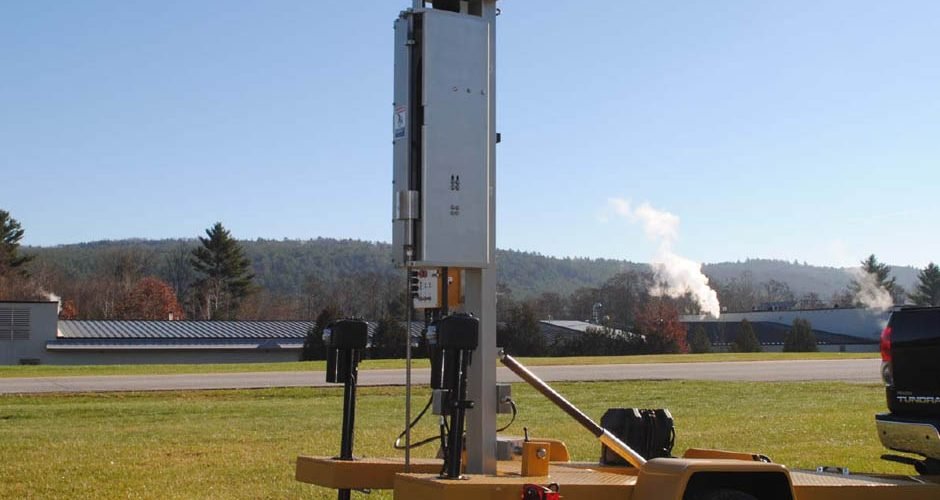Have you ever flipped through an old photo album, each picture telling a story from a different time? The Earth also has its own ‘album’ buried beneath our feet. Like rings on a tree stump can tell a tree’s age, soil layers narrate the Earth’s past events. Let’s dive into this fascinating story of the world beneath us.
Table of Contents
A Layered Chronicle
Think of Earth’s crust as a multi-layered cake. Each layer’s distinct composition and texture encapsulates different epochs of Earth’s history. Some strata recount tales of ancient forests, while others echo the footfalls of dinosaurs or depict the embrace of vast ice sheets.
Armed with specialized equipment, geotechnical engineers extract core samples, providing a glimpse into these layers, much like slicing into a cake reveals its tiers. Every piece they retrieve is a chapter from Earth’s storybook detailing events from epochs gone by.
In analyzing these samples, we’re not merely studying the Earth’s composition; we’re unveiling the intricate tales woven into the very fabric of our planet.
Reading the Pages of History
Color and Texture
The color of soil layers can indicate the past environment. Darker layers mean the presence of organic material, suggesting a time when plants thrived. Lighter or reddish layers may reveal the presence of iron or a period of oxidation.
Fossils and Artifacts
Just like finding a toy in a cereal box, sometimes, these layers surprise us with fossils or ancient artifacts, revealing the type of life that existed in that era or the human activities that took place.
Sudden Changes
If there’s a sudden shift in the type or color of soil, it might hint at a rapid change in the environment, possibly due to events like volcanic eruptions, floods, or even meteor strikes.
Thickness
Sometimes, a very thin layer might mean a lack of significant events during that time. In contrast, a thick layer might indicate long periods of stability or accumulation.
Why Does This Matter?
At first glance, digging up old dirt might seem purely academic, but understanding soil samples is akin to engaging in a deep and insightful conversation with our planet’s past. Here’s why these discussions are not just fascinating but also vital for our present and future:
Climate Change: The Earth has seen countless climate changes over its lifetime. Ancient soil layers are like time capsules, capturing snapshots of past climates. By studying these layers, scientists can glean insights into historical temperature trends, atmospheric conditions, and even past carbon dioxide levels. This information is pivotal, as it helps us piece together the Earth’s climatic puzzle. With this knowledge, we can better predict and potentially mitigate the impacts of current and looming climate changes, ensuring a safer and more sustainable future for all.
Historical Events: Soil doesn’t just chronicle natural history; it’s also a record of human history. Distinct layers in the soil can mirror significant epochs in our shared human story. For instance, traces of specific minerals or organic compounds might point to ancient agricultural practices, revealing crops our ancestors cultivated. Similarly, remnants found in particular layers could indicate the sites of old human settlements or even great civilizations that once flourished. This understanding not only quenches our historical curiosity but also offers lessons from the past that can inform our present-day decisions.
Natural Resource Management: The ground beneath our feet is more than just dirt; it’s a reservoir of resources that sustains life. Understanding the composition, structure, and properties of soil is fundamental for a multitude of human endeavors. Farmers rely on this knowledge to choose the best crops and cultivation techniques, ensuring food security.
Individuals involved in water management analyze soil profiles to understand groundwater flow and availability, which is crucial in increasing water scarcity. Additionally, a deep knowledge of soil composition ensures the safe and stable building of structures, from houses to skyscrapers.
In essence, every core sample every soil analysis, strengthens our bond with the Earth, enhancing our respect for its history and guiding our steps towards a more harmonious future.
Tools of Discovery
In the intriguing world of geotechnical exploration, several instruments stand as silent narrators of Earth’s tales. The automatic dynamic cone penetrometer is a front-runner, delving deep into the ground to gauge the strength and consistency of soil layers. Its precise measurements act as a bridge between the visible world and the hidden stories beneath.
Similarly, the vane shear test apparatus, with its rotating blades, measures the shear strength of soft clays. Think of it as an interpreter, translating the whispers of delicate terrains into data we can understand.
Then there’s the standard penetration test (SPT) equipment. Its rhythmic hammering assesses soil’s resistance, helping us to determine ground conditions with each forceful beat. It’s akin to tapping into the Earth’s pulse, feeling its ever-evolving heartbeat.
Each tool, with its distinct function, not only unveils the mysteries below but also reiterates the marvel of human ingenuity, enabling us to converse with the ground we walk upon.
Unearthing Connections
As we journey through life, we must remember that every step we take is on a surface rich in history, stories, and lessons. From the subtle shifts in soil colors to the rhythmic beat of geotechnical equipment, we’re continuously reminded of the intricate tapestry of events that have shaped our world. While the Earth’s layers serve as silent witnesses to eons gone by, the tools we’ve developed enable us to bridge the chasm of time, linking our present to a deep-rooted past. So, the next time you feel the ground beneath your feet, pause and reflect on the myriad tales it holds. Embrace this knowledge, for it deepens our connection to the Earth and paves the way for a future where we cherish and respect the legacy embedded in our planet’s core.





